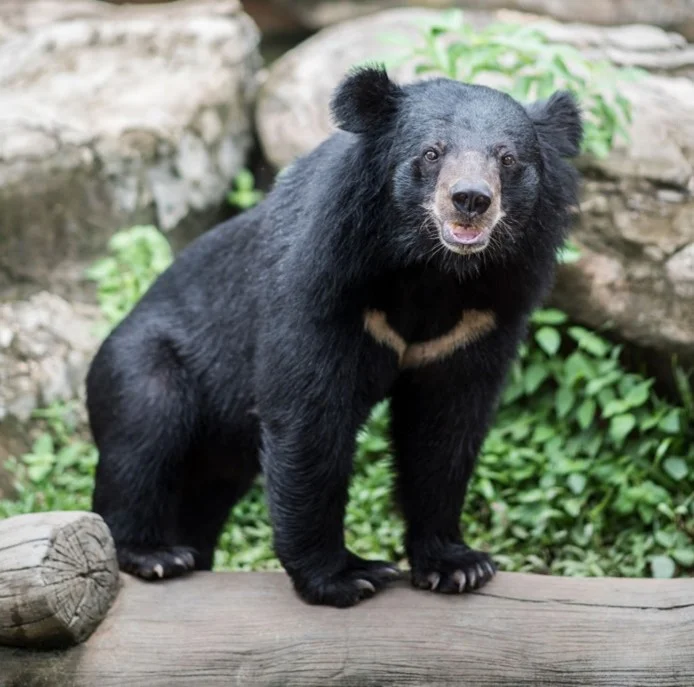Environment & Ecology
In News: The Kashmir Valley has bucked the trend of Asiatic black bear attacks on humans rarely reported throughout the animal’s global range.
Asiatic Black Bear

- Scientific name – Ursus thibetanus
- It is also called Himalayan bear, Tibetan bear, or moon bear
- It has a glossy black (sometimes brownish) coat with a whitish mark shaped like a crescent moon on the chest.
- Its long, coarse neck and shoulder hair forms a modified mane.
- It is omnivorous, eating insects, fruit, nuts, bees and honey, small mammals, and birds as well as carrion.
- It occasionally attacks domestic animals.
- They are generally nocturnal, sleeping in caves or tree hollows during the day
- During the summer the Asiatic black bear lives mainly in forested hills and mountains at elevations up to 3,600 metres (11,800 feet).
- Becoming fat by fall, it spends the winter at elevations of 1,500 metres (5,000 feet) or less and may sleep for much of the time.
- An adult male weighs 100–200 kg (220–440 pounds), a female about half as much; its length averages about 130–190 cm (51–75 inches), in addition to a 7–10-cm (3–4-inch) tail.
- Asiatic black bears may live as long as 25 years in the wild and up to 39 years in captivity.
- IUCN status – Vulnerable
- All Indian Bear species are listed under Appendix I in CITES and Schedule I of the Wildlife (Protection) Act, 1972.
- This provides complete protection to the species from hunting and trade.
Distribution
- Afghanistan; Bangladesh; Bhutan; Cambodia; China; India; Iran, Islamic Republic of; Japan; Korea, Democratic People’s Republic of; Korea, Republic of; Lao People’s Democratic Republic; Myanmar; Nepal; Pakistan; Russian Federation; Taiwan, Province of China; Thailand; Viet Nam
Reproduction
- Males and females become sexually mature between ages three and four.
- Mating occurs between June and October, and pregnancies typically produce two cubs some seven to eight months later.
Sources: The hindu
Previous Year Question
Q1) consider the following statements: (2019)
- Asiatic lion is naturally found in India only.
- Double-humped camel is naturally found in India only.
- One-horned rhinoceros is naturally found in India only.
Which of the statements given above is/are correct?
- 1 only
- 2 only
- 1 and 3 only
- 1, 2 and 3














